Facts about ceramics you probably didn't know
Ceramics are all around us, yet many people overlook their fascinating intricacies. Did you know that ceramics date back to the dawn of civilization? They have been a vital part of human culture for thousands of years, serving both practical and artistic purposes. From ancient pottery found in archaeological digs to the sleek porcelain dishes we use today, ceramics tell a story of innovation and creativity. But what exactly are ceramics? In simple terms, they are inorganic, non-metallic materials that are typically made from clay and other natural substances. This article will take you on a journey through the hidden world of ceramics, revealing their history, types, uses, and the science that makes them so unique.
The story of ceramics is as old as humanity itself. Archaeologists have discovered ceramic artifacts that date back to as early as 29,000 BC, showcasing how our ancestors utilized clay to create tools and containers. In ancient civilizations, ceramics were essential for storage, cooking, and even religious rituals. The earliest known ceramics were simple figurines and utilitarian items, but as time progressed, cultures began to innovate. For instance, the Chinese perfected porcelain during the Tang Dynasty, and the Japanese developed intricate tea sets that are still revered today. Ceramics have evolved dramatically, reflecting the artistic and technological advancements of each era. They are not just objects; they are a testament to the ingenuity of various cultures throughout history.
Ceramics can be categorized into several types, each with its unique properties and applications. The main categories include:
- Earthenware: This is the most common type of ceramic, made from clay fired at low temperatures. It is porous and often used for decorative pots and tiles.
- Stoneware: Fired at higher temperatures, stoneware is durable and non-porous, making it ideal for cookware and dinnerware.
- Porcelain: Known for its strength and translucence, porcelain is often used for fine china and high-end decorative pieces.
- Bone china: A type of porcelain that includes bone ash, giving it a unique whiteness and translucency, favored for fine tableware.
Each type of ceramic has its own production methods and applications, demonstrating the versatility of this material in our daily lives.
Functional ceramics play a crucial role in our everyday activities. From the plates we eat off to the tiles on our floors, these ceramics are designed for practicality. Cookware made from stoneware, for instance, is not only aesthetically pleasing but also highly functional, able to withstand high temperatures. Similarly, sanitary ware, such as toilets and sinks, combines utility with style, ensuring that our bathrooms are both functional and visually appealing. The blend of utility and artistry in functional ceramics is what makes them indispensable in modern living.
On the flip side, decorative ceramics serve primarily aesthetic purposes. Think of the beautiful vases that adorn our homes or the intricate sculptures that grace art galleries. These pieces often tell a story or represent cultural significance, showcasing the creativity and skill of the artisans who crafted them. The world of decorative ceramics is vast, encompassing everything from traditional pottery to contemporary art pieces. Each creation is a unique expression of cultural heritage and personal artistry.
Surprisingly, ceramics are not just confined to the art world or household items; they play a pivotal role in modern technology. Advanced ceramics are used in various high-tech applications, including electronics, aerospace, and even medical devices. For instance, ceramic materials are essential in the production of capacitors and insulators in electronic devices. In aerospace, they are used for thermal protection systems that shield spacecraft during re-entry. Furthermore, in the medical field, ceramics are utilized in prosthetics and dental implants due to their biocompatibility and durability. This highlights how ceramics have transcended their traditional roles, evolving into materials that drive innovation in science and technology.
The methods used to create ceramics have transformed dramatically over the years. Traditional techniques often involve handcrafting and natural firing methods, resulting in unique, one-of-a-kind pieces. However, modern advancements have introduced new technologies such as 3D printing and automated kilns, allowing for mass production and precision. While traditional methods emphasize artistry and individual craftsmanship, modern techniques focus on efficiency and consistency. This contrast illustrates how the world of ceramics continues to evolve while still honoring its rich heritage.
At the heart of ceramics lies a fascinating interplay of chemistry and physics. The process of creating ceramics involves several stages, including shaping, drying, and firing. During firing, the clay undergoes a transformation, where the heat causes physical and chemical changes that enhance its strength and durability. Understanding these processes not only sheds light on the beauty of ceramics but also on their resilience.
Firing is a crucial step in ceramic production. Different firing techniques, such as bisque and glaze firing, significantly impact the final product's strength and appearance. Bisque firing, the initial firing, hardens the clay but leaves it porous, while glaze firing melts the glaze to create a glass-like surface. This dual firing process is essential for achieving the desired aesthetic and functional properties of ceramics.
Glazing is another vital aspect of ceramics, adding color and texture to the surface. Various glazing methods exist, each with unique chemical properties that enhance both functionality and aesthetics. For example, some glazes are designed to be food-safe, while others may create a stunning visual effect through reactive glazing techniques. The art of glazing not only beautifies ceramic pieces but also protects them, making it an essential aspect of ceramic production.
Q: What are ceramics made of?
A: Ceramics are primarily made from clay, along with other natural materials such as feldspar and quartz.
Q: How long have ceramics been around?
A: Ceramics have been used for thousands of years, with the oldest known pieces dating back to around 29,000 BC.
Q: What is the difference between earthenware and porcelain?
A: Earthenware is porous and fired at lower temperatures, while porcelain is non-porous, stronger, and fired at higher temperatures.
Q: Are ceramics used in technology?
A: Yes, advanced ceramics are used in various technological applications, including electronics, aerospace, and medical devices.
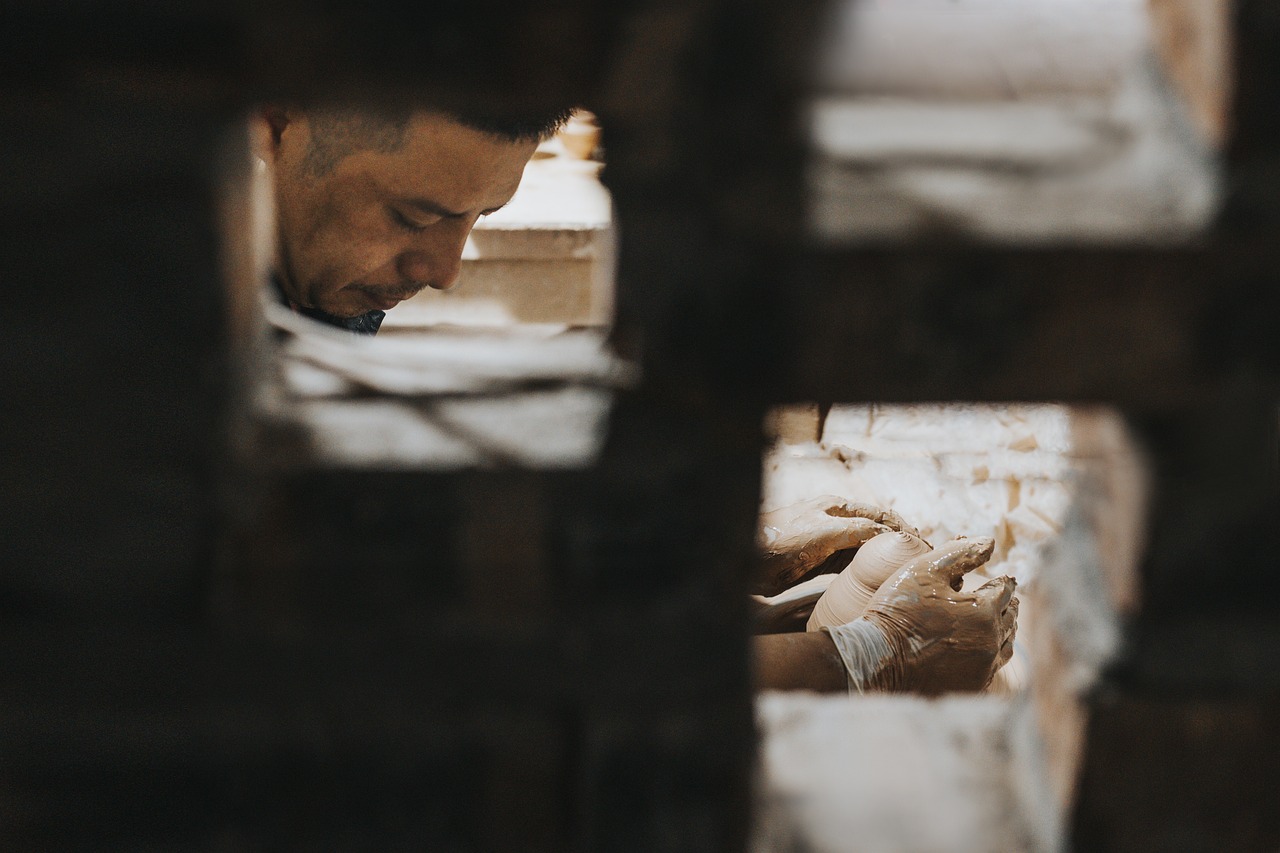
The History of Ceramics
Ceramics boast a rich and fascinating history that dates back to the dawn of civilization itself. The earliest known ceramic artifacts, which include pottery and figurines, have been discovered in regions such as China and the Middle East, dating back to around 29,000 BC. These ancient creations were not merely functional but also held cultural significance, often used in rituals and ceremonies. Imagine a time when humans first learned to mold clay into shapes that could hold food or water; this innovation marked a pivotal moment in human history, allowing societies to thrive and evolve.
As we journey through time, we find that ceramics have played a crucial role in various cultures. For instance, the Chinese were pioneers in the development of high-fired stoneware and porcelain, which emerged around the 7th century AD. This mastery of ceramics allowed them to create stunningly beautiful and durable wares that were highly coveted across the globe. Similarly, the Greeks and Romans produced exquisite pottery adorned with intricate designs and narratives that reflected their mythology and daily life. Each piece tells a story, a snapshot of the culture and values of its time.
Throughout the ages, ceramics have been used for a multitude of purposes, evolving in style and function. From the practical earthenware used by ancient civilizations for cooking and storage to the delicate porcelain that graced the tables of royalty, the journey of ceramics is a testament to human creativity. The Renaissance period saw a resurgence in ceramic art, characterized by vibrant glazes and elaborate designs, further cementing ceramics as a significant art form.
In modern times, ceramics have transcended their traditional uses. They are now found in various forms, from tableware to advanced materials used in technology. The invention of new firing techniques and materials has allowed for unprecedented creativity and functionality in ceramic design. Today, ceramics are not only appreciated for their beauty but also for their durability and versatility. They have become an integral part of our daily lives, often taken for granted, yet they hold a legacy that spans thousands of years.
To summarize, the history of ceramics is a remarkable journey through time, showcasing the ingenuity of human beings in shaping the world around them. It reflects our evolving needs and desires, marrying functionality with artistry in ways that continue to inspire us today. As we explore the various types and uses of ceramics, we can appreciate the profound impact they have had on our cultures and societies.
- What are the earliest known ceramics? The earliest known ceramics date back to around 29,000 BC, discovered in regions like China and the Middle East.
- How did ceramics evolve over time? Ceramics evolved from simple earthenware used for storage and cooking to intricate porcelain and decorative pieces that reflect cultural significance.
- What role did ceramics play in ancient cultures? Ceramics were essential for daily life, used in cooking, storage, and often held ceremonial importance in rituals.
- How are ceramics used today? Modern ceramics are utilized in various applications, including tableware, art, and advanced materials in technology.

Types of Ceramics
Ceramics are not just beautiful pieces of art; they encompass a wide range of materials that serve various purposes in our daily lives. From the humble mug you sip your coffee from to the intricate sculptures that adorn galleries, ceramics come in different types, each with its own unique properties and uses. Understanding these types can deepen your appreciation for this ancient craft and its modern applications.
The world of ceramics can be broadly categorized into several types, primarily based on their composition, firing temperature, and intended use. Here’s a quick rundown of the major categories:
- Earthenware: This is the most common type of ceramic, made from clay that is fired at low temperatures. It’s porous and often has a rustic appearance, making it perfect for decorative pots and garden items.
- Stoneware: Fired at higher temperatures, stoneware is denser and more durable than earthenware. It’s commonly used for cookware and dinnerware due to its ability to withstand thermal shock.
- Porcelain: Known for its strength and translucence, porcelain is made from a refined clay and fired at very high temperatures. It’s often used for fine dinnerware and decorative objects.
- Bone China: A type of porcelain that includes bone ash, bone china is renowned for its whiteness and translucency. It’s often used for high-end tableware.
Each type of ceramic serves different functions in our lives. For instance, earthenware is often used in pottery and decorative items, while stoneware is favored for its practical applications in kitchens. Porcelain, with its elegant finish, is typically reserved for special occasions. Understanding these distinctions not only helps in selecting the right ceramic for your needs but also enriches your knowledge about the artistry involved in their creation.
Moreover, ceramics can be classified based on their functional and decorative qualities. Functional ceramics are designed with practicality in mind. They include:
- Cookware: Items like baking dishes, pots, and pans made from stoneware or ceramic.
- Tiles: Used in flooring and walls, these can be made from various types of ceramics, offering both durability and aesthetic appeal.
- Sanitary ware: Essential for bathrooms, these ceramics include toilets, sinks, and bathtubs, often made from vitreous china for its non-porous qualities.
On the other hand, decorative ceramics focus on aesthetics and artistic expression. These include vases, sculptures, and artistic pottery that showcase the creator's skill and creativity. They often employ intricate glazing techniques and unique designs to stand out as pieces of art.
In addition to traditional uses, ceramics play a significant role in modern technology. Advanced ceramics, such as those used in electronics, aerospace, and medical devices, demonstrate the versatility of ceramic materials beyond their conventional applications. These high-tech ceramics are engineered to meet specific requirements, such as heat resistance or electrical insulation, showcasing the innovative spirit of ceramic science.
In conclusion, the types of ceramics are as diverse as their applications. Whether for functional use or artistic expression, ceramics have a vital place in our lives, reflecting both utility and creativity. So, the next time you admire a ceramic piece, remember the rich history and science behind its creation!

Functional Ceramics
When you think of ceramics, what usually comes to mind? Perhaps beautiful vases or intricate sculptures? But hold on! Ceramics are not just about aesthetics; they play a vital role in our daily lives through their functional applications. are designed specifically for practical use, combining utility with art in ways that can surprise you. From the humble coffee mug you sip from each morning to the tiles under your feet, ceramics are everywhere, and they are more remarkable than you might think.
One of the most common types of functional ceramics is earthenware, which is known for its porous nature and versatility. It’s often used in cookware, such as baking dishes and pots. This type of ceramic is not only durable but also has excellent heat retention properties, making it perfect for slow-cooking your favorite stews. On the other hand, stoneware is another popular choice, recognized for its strength and ability to withstand high temperatures. It’s often used in dinnerware and bakeware, proving that ceramics can be both beautiful and practical.
But let’s not forget about porcelain, often regarded as the crème de la crème of ceramics. With its fine texture and translucent quality, porcelain is not just for fancy dishes. It’s also used in sanitary ware, like toilets and sinks, where hygiene and durability are paramount. This material can withstand high temperatures and is resistant to chipping, making it a favorite in both homes and commercial spaces.
The beauty of functional ceramics lies in their diversity. They can be shaped and molded into various forms, allowing for endless creativity in design. For instance, consider the tiles that adorn your kitchen or bathroom. Ceramic tiles come in a multitude of colors, patterns, and finishes, providing both functionality and style. They are easy to clean, water-resistant, and can even help regulate indoor temperatures, making them a smart choice for any home.
Moreover, ceramics are not just limited to household items. They are increasingly used in various industries, including construction and automotive. For example, ceramic materials are used in the production of bricks and roof tiles, providing durability and aesthetic appeal to buildings. In the automotive industry, ceramics are used in brake pads and engine components due to their ability to withstand high temperatures and wear.
In summary, functional ceramics are an essential part of our everyday lives, blending practicality with artistry. They are not just decorative items but are integral to various applications, from cookware to construction materials. The next time you pick up a ceramic dish or step on a ceramic tile, take a moment to appreciate the craftsmanship and utility behind these remarkable materials. They truly are a testament to human ingenuity!
- What are functional ceramics? Functional ceramics are materials designed for practical use, such as cookware, tiles, and sanitary ware.
- What types of ceramics are used for cooking? Earthenware, stoneware, and porcelain are commonly used for cooking due to their heat retention and durability.
- How are ceramics used in technology? Ceramics are utilized in various technological applications, including electronics, aerospace, and medical devices due to their unique properties.
- Are ceramics environmentally friendly? Many ceramics are made from natural materials and can be recycled, making them a more sustainable choice compared to some plastics.
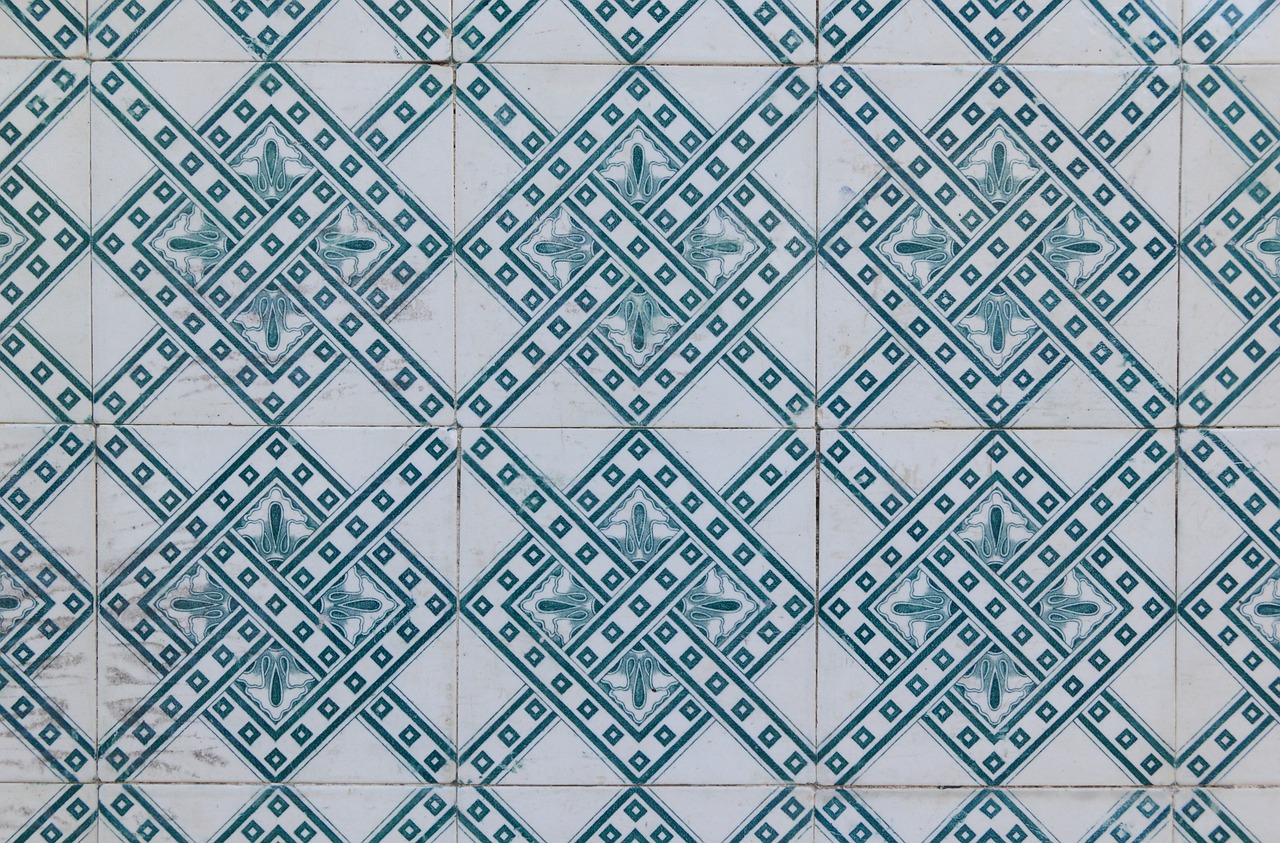
Decorative Ceramics
When you think of ceramics, your mind might immediately drift to functional items like plates or bowls. But hold on a second! Decorative ceramics are a whole different ball game, and they play an essential role in the world of art and design. These pieces are not just about utility; they are about **expression**, **creativity**, and **aesthetic appeal**. Imagine walking into a room and being greeted by stunning ceramic sculptures that tell a story or vibrant tiles that transform an ordinary wall into a **canvas** of color. Decorative ceramics bridge the gap between everyday life and artistic endeavor.
Throughout history, cultures around the globe have embraced decorative ceramics, each adding their unique flair and techniques. From the intricate designs of **Chinese porcelain** to the vibrant patterns of **Mexican Talavera**, these pieces reflect the **cultural heritage** and artistic traditions of their creators. For instance, the famous blue and white porcelain from Delft, Netherlands, showcases how a simple color palette can create mesmerizing designs that capture the viewer's attention. It's like staring into a beautiful landscape painted on a plate!
But what exactly makes decorative ceramics so special? It’s the combination of **skill**, **imagination**, and **materials**. Artists meticulously shape clay into various forms, often using techniques passed down through generations. After shaping, they apply glazes that can range from glossy to matte finishes, adding depth and character to each piece. The glazing process is where the magic happens, as colors blend and react in the kiln, resulting in stunning visual effects that can’t be replicated. This unpredictability is part of what makes collecting decorative ceramics so exciting. You never know exactly how a piece will turn out until it comes out of the kiln!
Moreover, decorative ceramics are not just confined to sculptures and vases. They can be found in various forms, including:
- Tiles: Often used in home decor, these can transform spaces with their unique designs.
- Figurines: These little works of art can evoke emotions and tell stories, making them perfect conversation starters.
- Wall Art: Artists often create stunning ceramic wall hangings that serve as focal points in any room.
The beauty of decorative ceramics lies in their ability to connect us to different cultures and histories. Each piece is a **snapshot** of the time and place it was created, making it a unique addition to any collection. Whether you're a seasoned collector or a casual admirer, there’s something undeniably captivating about the craftsmanship and artistry involved in decorative ceramics. They remind us that art can be found in the most unexpected places, turning the mundane into the extraordinary.
Q1: What are decorative ceramics made from?
Decorative ceramics are primarily made from clay, which is shaped and then fired in a kiln. The clay can be mixed with various materials to enhance its properties, and glazes are applied to add color and texture.
Q2: How can I care for my decorative ceramics?
To care for decorative ceramics, avoid exposing them to extreme temperatures and direct sunlight. Clean them gently with a soft cloth and mild soap to preserve their beauty.
Q3: Are decorative ceramics safe for food use?
While some decorative ceramics are food-safe, many are not. Always check the manufacturer's guidelines before using them for food or beverages.
Q4: How can I tell if a piece of ceramic is decorative or functional?
Generally, decorative ceramics are designed for aesthetic purposes and may lack the durability needed for everyday use. If the piece is primarily ornate and lacks functional features (like a handle or a flat base), it’s likely decorative.
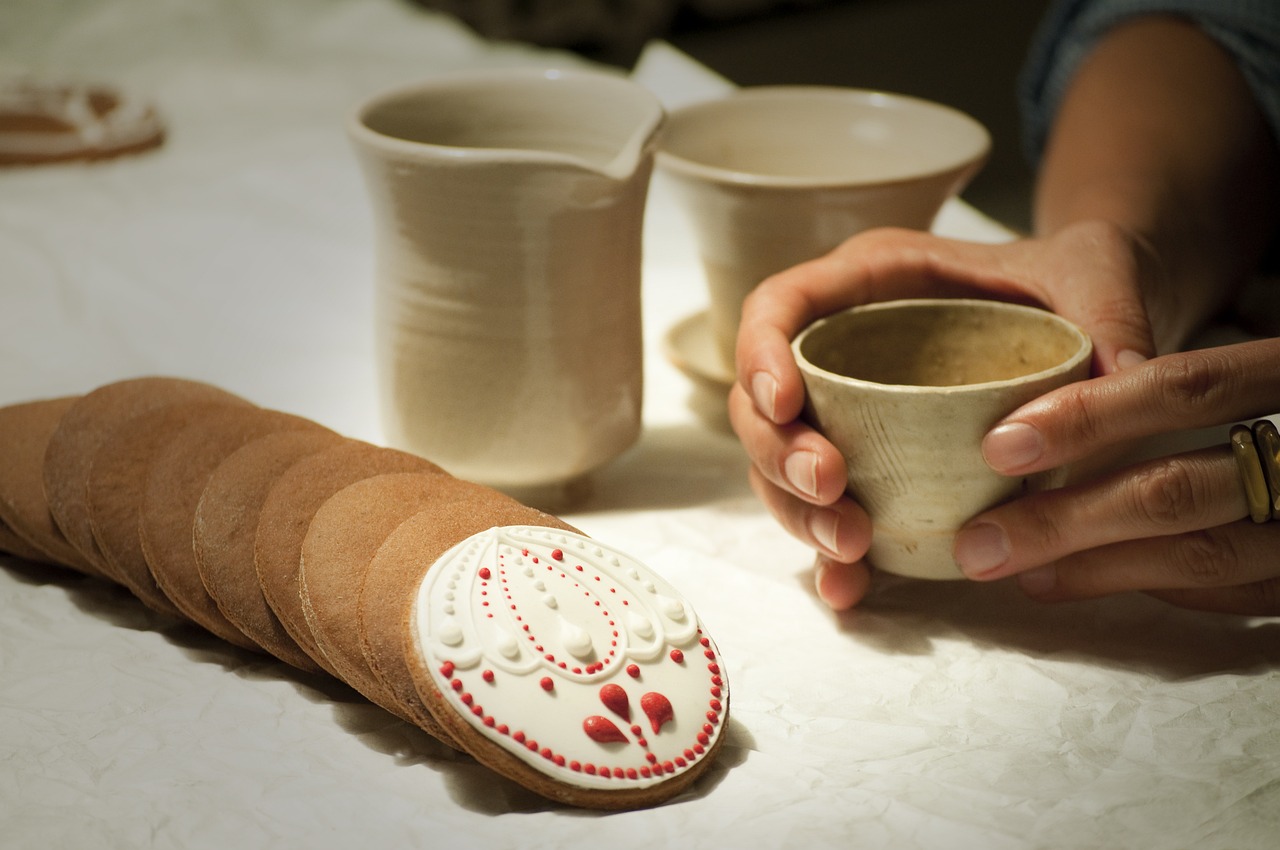
Ceramics in Technology
Ceramics are not just beautiful pieces of art or functional kitchenware; they are also at the forefront of technological innovation. You might be surprised to learn just how integral ceramics are in various high-tech applications. From electronics to aerospace and even medical devices, ceramics play a critical role in enhancing performance and durability. Imagine a world where your smartphone, airplane, and even surgical tools depend on these unassuming materials!
One of the most exciting aspects of ceramics in technology is their ability to withstand extreme conditions. For instance, in the aerospace industry, ceramics are used in the construction of heat shields for spacecraft. These materials can endure temperatures exceeding 1,500 degrees Celsius while remaining lightweight, making them ideal for space travel. It's like wrapping your spacecraft in a protective blanket that can withstand the harshest environments!
In the realm of electronics, ceramics are used to create capacitors, insulators, and even piezoelectric devices. These components are essential for the functionality of modern gadgets. For example, piezoelectric ceramics convert mechanical stress into electrical energy, which is crucial in devices like sensors and actuators. Think of it as a dance between pressure and electricity, where the ceramics lead the way!
Moreover, the medical field has also embraced ceramics for their biocompatibility and durability. Dental implants and prosthetics often utilize advanced ceramic materials that mimic the properties of natural bone. This not only enhances the longevity of these devices but also promotes better integration with the human body. It's fascinating how a simple material can bridge the gap between technology and biology, isn't it?
To better understand the various applications of ceramics in technology, let’s take a look at the following table that highlights some key areas:
| Application | Description | Benefits |
|---|---|---|
| Aerospace | Heat shields for spacecraft | High-temperature resistance, lightweight |
| Electronics | Capacitors and insulators | Enhanced performance, reliability |
| Medical | Dental implants and prosthetics | Biocompatibility, durability |
| Energy | Fuel cells and batteries | Improved efficiency, longevity |
As you can see, the potential of ceramics in technology is vast and varied. Their unique properties make them indispensable in fields that require precision, reliability, and resilience. So, the next time you admire a piece of pottery or a sleek tile, remember that ceramics are also the unsung heroes of modern technology!
- What are ceramics? Ceramics are inorganic, non-metallic materials made from clay and other raw materials, which are shaped and then fired at high temperatures to achieve hardness and durability.
- How are ceramics used in technology? Ceramics are used in various high-tech applications, including electronics, aerospace, and medical devices, due to their unique properties like heat resistance, biocompatibility, and electrical insulation.
- What are some examples of ceramic materials? Common ceramic materials include porcelain, stoneware, earthenware, and advanced ceramics like zirconia and alumina, which are used in specialized applications.
- Are ceramics environmentally friendly? Many ceramics are made from natural materials and can be recycled, making them a more sustainable option compared to some synthetic materials.
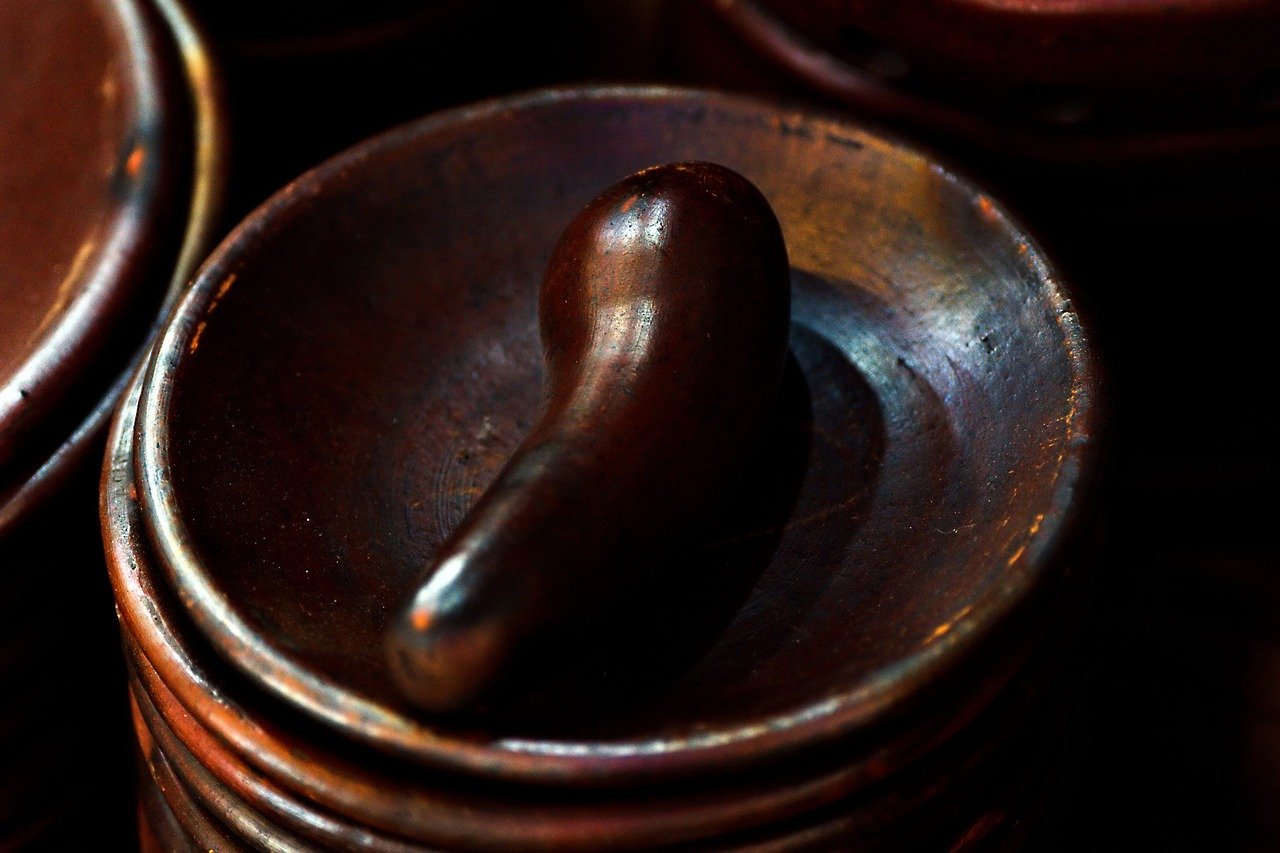
Traditional vs. Modern Techniques
The world of ceramics is a fascinating blend of tradition and innovation. Traditional ceramic techniques date back thousands of years, rooted in the practices of ancient civilizations. These methods often involve handcrafting, where artisans mold clay using their hands and simple tools, relying heavily on skills passed down through generations. The beauty of traditional ceramics lies in their uniqueness; no two pieces are exactly alike, showcasing the individual touch of the artisan. For example, in regions like Japan, the art of pottery is deeply ingrained in culture, with techniques such as Raku firing that create stunning, unpredictable results.
On the flip side, modern ceramic techniques have revolutionized the way we create and perceive ceramics. With the advent of technology, processes have become more efficient and precise. For instance, computer-aided design (CAD) allows for intricate designs that would be incredibly difficult to achieve by hand. Additionally, modern kilns can reach higher temperatures and maintain consistent heat, resulting in stronger and more durable products. This technological leap has made it possible to produce ceramics on a larger scale, meeting the demands of a growing market.
One of the most notable differences between traditional and modern techniques is the approach to materials. Traditional ceramics often use locally sourced clay and natural glazes, giving each piece a distinct regional character. Modern ceramics, however, may incorporate synthetic materials and glazes that enhance durability and color consistency. This shift has led to the emergence of new styles and applications, such as ceramic tiles that can withstand extreme conditions in both residential and commercial settings.
Despite these advancements, many artisans still embrace traditional methods, blending them with modern practices to create hybrid techniques. This fusion allows for the preservation of cultural heritage while also pushing the boundaries of what ceramics can achieve. For example, some artists might use traditional throwing techniques but incorporate modern glazing methods to create pieces that are both beautiful and functional.
| Aspect | Traditional Techniques | Modern Techniques |
|---|---|---|
| Crafting Method | Handcrafted, artisan skills | Machine-assisted, CAD designs |
| Materials | Locally sourced clay, natural glazes | Synthetic materials, advanced glazes |
| Production Scale | Small-scale, unique pieces | Large-scale, uniform products |
| Temperature Control | Traditional kilns | High-tech kilns with precise control |
| Artistic Influence | Regional and cultural significance | Global trends and innovations |
In conclusion, the contrast between traditional and modern ceramic techniques highlights a rich tapestry of artistry and technology. As we continue to explore this field, it’s essential to appreciate the craftsmanship of the past while embracing the innovations of today. Whether you’re drawn to the charm of handmade pottery or the sleekness of modern designs, ceramics will always offer something unique and captivating.
- What are the main differences between traditional and modern ceramics? Traditional ceramics focus on handcrafting and unique artistry, while modern ceramics often utilize technology for efficiency and precision.
- Can modern techniques enhance the durability of ceramics? Yes, modern techniques often involve advanced materials and firing methods that significantly improve the strength and durability of ceramic products.
- Is traditional ceramics still relevant today? Absolutely! Many artisans continue to use traditional methods, often blending them with modern techniques to create innovative and culturally significant pieces.

The Science of Ceramics
The world of ceramics is not just about beautiful pots and intricate designs; it’s a fascinating blend of chemistry and physics that transforms raw materials into durable and functional art. At its core, ceramics are made from clay, a natural material that undergoes a series of processes to achieve the final product. Understanding the science behind ceramics involves diving into the methods of firing, glazing, and the molecular structure of different clay types. Each step in the process plays a crucial role in determining the strength, durability, and aesthetic appeal of the ceramic piece.
Let’s start with the firing process, which is essentially the heart of ceramic production. Firing involves heating the shaped clay in a kiln at high temperatures, which causes it to undergo chemical changes that harden the material. There are several types of firing processes, each yielding different results:
- Bisque Firing: This is the first firing that transforms the clay into a porous state, making it easier to handle and glaze.
- Glaze Firing: After bisque firing, the piece is coated with glaze and fired again at even higher temperatures. This process vitrifies the clay, making it non-porous and adding a beautiful finish.
The temperatures used in these firings can vary widely, typically ranging from 1,800°F (982°C) to over 2,400°F (1,316°C), depending on the type of clay and the desired final characteristics. The higher the firing temperature, the stronger and more durable the ceramic becomes. This is where the magic happens: the heat causes the particles in the clay to bond together, resulting in a solid structure that can withstand the test of time.
Next, we have glazing, which not only enhances the visual appeal of ceramics but also adds a layer of protection. Glazes are made from various minerals and can be applied in numerous ways, including dipping, spraying, or brushing. The chemistry behind glazes is intricate, as they need to melt and form a glassy surface during the glaze firing. This process involves a delicate balance of silica, alumina, and fluxes, which work together to create the desired texture and color. For example, iron oxide can produce rich earthy tones, while cobalt oxide yields vibrant blues. The interaction between these components during firing results in a wide spectrum of colors and finishes.
Furthermore, the molecular structure of different clay types also plays a significant role in the final outcome of ceramic products. There are primarily three types of clay used in ceramics:
| Type of Clay | Characteristics | Common Uses |
|---|---|---|
| Earthenware | Low firing temperature, porous, and generally red or brown in color. | Flower pots, tiles, and decorative items. |
| Stoneware | Mid to high firing temperature, durable, and often grey or brown. | Cookware, dinnerware, and functional items. |
| Porcelain | High firing temperature, non-porous, and typically white and translucent. | Fine china, art pieces, and high-quality tableware. |
Each type of clay has its unique properties that influence the final product's strength, texture, and appearance. For instance, porcelain is renowned for its strength and beauty, making it a favorite for fine dining ware, while earthenware is valued for its rustic charm and versatility.
In conclusion, the science of ceramics is an intricate dance of materials, temperatures, and techniques. It’s a field where art meets science, and understanding these processes not only enhances our appreciation for ceramic art but also sheds light on its practical applications in everyday life. Whether you’re admiring a delicate porcelain teacup or a sturdy stoneware pot, remember that behind every piece lies a fascinating story of transformation and creativity.
- What are ceramics made of? Ceramics are primarily made from clay, along with various minerals and additives that enhance their properties.
- What is the difference between earthenware, stoneware, and porcelain? Earthenware is porous and low-fired, stoneware is durable and mid-fired, while porcelain is high-fired and non-porous.
- How does glazing work? Glazing involves applying a glass-like coating to ceramics, which melts during firing to create a protective and decorative surface.
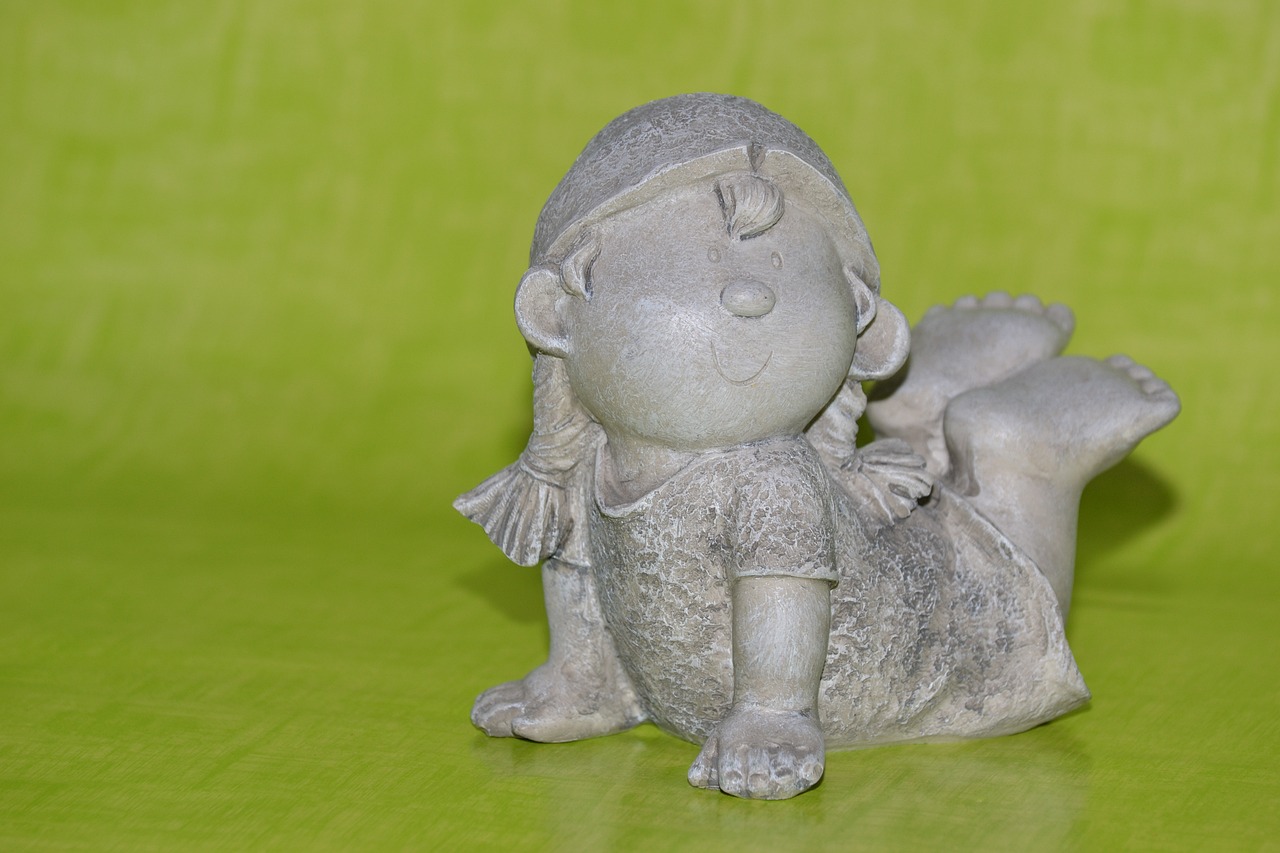
Firing Processes
When it comes to the world of ceramics, firing is the transformative process that turns raw clay into durable and functional objects. It’s akin to a caterpillar emerging as a butterfly; the change is profound and essential. Firing involves heating the shaped clay in a kiln to high temperatures, which initiates a series of chemical and physical reactions that solidify the material. This process not only enhances the strength of the ceramic but also determines its final appearance and functionality.
There are two primary stages of firing that every ceramic artist should understand: bisque firing and glaze firing. Each stage plays a crucial role in the overall creation of ceramic pieces. During the bisque firing, the clay is heated to a temperature that removes moisture and organic materials, resulting in a porous, yet sturdy, form. This initial firing typically occurs at temperatures ranging from 1,650°F to 2,200°F (900°C to 1,200°C). The bisque-fired clay is then ready for glazing, which is where the magic continues.
After the bisque firing, the next step is the glaze firing. This process involves applying a layer of glaze to the bisque-fired piece and then reintroducing it into the kiln at even higher temperatures, usually between 1,830°F to 2,380°F (1,000°C to 1,300°C). The glaze melts and fuses to the clay body, resulting in a smooth, often colorful surface that enhances both aesthetics and functionality. The firing process also helps in creating a vitrified structure, making the ceramic piece non-porous and suitable for various uses.
In addition to these standard processes, there are several firing techniques that can be employed to achieve unique results. Here are a few noteworthy methods:
- Raku Firing: A traditional Japanese technique where pieces are removed from the kiln while red hot and placed in combustible materials, creating unique surface effects.
- Wood Firing: This method uses wood as fuel, resulting in natural ash glazes and unpredictable surface textures that are highly valued in artistic ceramics.
- Salt Firing: During this process, salt is introduced into the kiln at high temperatures, which vaporizes and forms a glaze on the surface of the ceramics.
Understanding these firing processes not only enriches the appreciation for ceramic art but also empowers artists to experiment and innovate. Each firing technique brings its own set of challenges and rewards, much like cooking a gourmet meal where the right temperature and timing can make all the difference. As artists push the boundaries of what is possible with ceramics, the firing process remains a cornerstone of their craft, ensuring that each piece is a unique blend of science and artistry.
1. What temperature is used for bisque firing?
Typically, bisque firing occurs at temperatures ranging from 1,650°F to 2,200°F (900°C to 1,200°C).
2. Why is glaze firing done after bisque firing?
Glaze firing is essential because it melts the glaze, allowing it to fuse to the clay body, creating a non-porous and aesthetically pleasing surface.
3. What is the difference between Raku firing and traditional firing?
Raku firing involves removing pieces from the kiln while they are still hot and placing them in combustible materials, creating unique surface effects, whereas traditional firing keeps the pieces in the kiln until they cool down completely.
4. Can I fire ceramics at home?
Yes, but you will need a kiln specifically designed for ceramics, as well as knowledge of the different firing processes to ensure successful results.
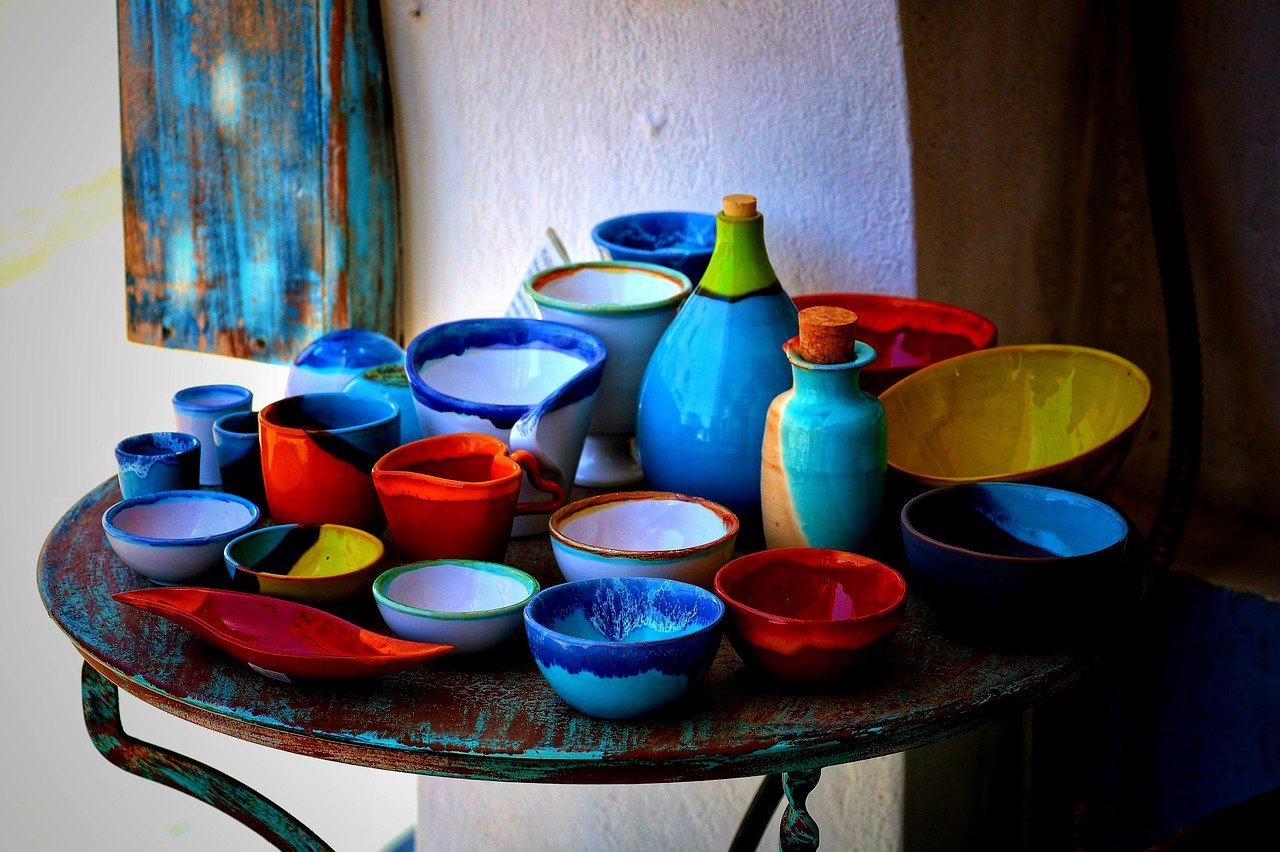
Glazing Techniques
Glazing is one of the most fascinating aspects of ceramics, as it can transform a simple clay piece into a vibrant work of art. The process of glazing involves applying a glass-like coating to the surface of ceramics, which not only enhances their appearance but also adds functionality. Imagine taking a dull, unremarkable pot and turning it into a dazzling centerpiece for your dining table—this is the magic of glazing!
There are several that artists and manufacturers use, each offering unique effects and characteristics. Some of the most popular methods include:
- Dip Glazing: This technique involves immersing the ceramic piece into a glaze solution. It's a quick and efficient method that allows for even coverage, making it ideal for large production runs.
- Brush Glazing: As the name suggests, this method uses a brush to apply glaze. It offers more control and is often used for detailed work, allowing artists to create intricate designs and patterns.
- Spray Glazing: This technique uses a spray gun to apply glaze, which can create smooth and even layers. It's particularly useful for achieving a uniform finish on larger pieces.
- Pouring Glaze: In this method, glaze is poured directly onto the ceramic. This technique can create unique drips and runs, adding an organic feel to the finished product.
Each of these techniques can produce different results, and the choice often depends on the desired outcome. For instance, dip glazing is perfect for a uniform finish, while brush glazing allows for more artistic expression. Furthermore, the type of glaze used can dramatically affect the final appearance. Glazes can be glossy, matte, transparent, or opaque, and they can come in an array of colors and textures.
Moreover, the chemistry behind glazes is equally intriguing. A typical glaze is composed of silica, flux, and alumina, each playing a crucial role in the melting and bonding process during firing. When the ceramics are heated, the glaze components melt and form a glassy surface that adheres to the clay body. The firing temperature and atmosphere can also influence the final outcome, leading to variations in color and texture. This is why two pieces glazed with the same technique can look remarkably different!
In addition to aesthetics, glazing also serves practical purposes. It creates a non-porous surface that makes ceramics easier to clean and more resistant to stains. This is particularly important for functional items like dinnerware and tiles, where durability and hygiene are essential. For example, a well-glazed plate can withstand the rigors of daily use while maintaining its beauty over time.
In conclusion, glazing techniques are an essential part of ceramic artistry, blending science and creativity in a way that captivates both the artist and the observer. Whether you’re a seasoned potter or just starting out, experimenting with different glazing methods can open up a world of possibilities. So, the next time you admire a beautifully glazed piece, remember the artistry and science that went into creating that stunning finish!
Q: What is the purpose of glazing in ceramics?
A: Glazing enhances the appearance of ceramics, provides a protective layer, and makes them easier to clean.
Q: Can all ceramics be glazed?
A: Most ceramics can be glazed, but the type of glaze and technique used may vary depending on the clay body and desired finish.
Q: How do I know which glazing technique to use?
A: The choice of glazing technique depends on the desired effect, the size of the piece, and your level of expertise. Experimenting with different methods can help you find your preferred style.
Frequently Asked Questions
- What are ceramics made from?
Ceramics are primarily made from natural clay minerals, which are shaped and then hardened by firing at high temperatures. This process transforms the raw materials into durable and often beautiful objects.
- What is the difference between earthenware, stoneware, and porcelain?
Earthenware is a low-fired ceramic that is porous and often used for decorative pieces. Stoneware is fired at higher temperatures, making it denser and more durable, suitable for functional items like dishes. Porcelain is the finest type, known for its translucence and strength, often used in fine china.
- How does the firing process affect ceramics?
The firing process is crucial as it transforms the clay into a hard, durable material. Different firing techniques, such as bisque and glaze firing, affect the strength, color, and texture of the final product, enhancing both its functionality and aesthetic appeal.
- What are the common uses of ceramics in daily life?
Ceramics are everywhere in our daily lives! They are used in cookware, tiles, sanitary ware, art pieces, and even in advanced technology applications like electronics and medical devices. Their versatility makes them essential in both functional and decorative items.
- Can ceramics be recycled?
While traditional ceramics are not typically recyclable, they can be repurposed in creative ways. For instance, broken ceramic pieces can be used in mosaics or as drainage material in gardening. However, it's best to check local recycling guidelines for specific practices.
- How do glazing techniques enhance ceramics?
Glazing techniques add color, texture, and a protective layer to ceramics. Different glazing methods can create unique finishes and effects, making each piece not only functional but also a work of art. The chemical properties of glazes also contribute to the durability of the ceramics.
- Are there health concerns associated with ceramics?
Generally, ceramics are safe for use. However, it's important to ensure that any ceramic items, especially those used for food, are lead-free and food-safe. Always check for certifications or labels that indicate safety standards.
- What is the significance of ceramics in different cultures?
Ceramics have played a vital role in various cultures throughout history, often reflecting the artistic expressions and daily lives of people. From ancient pottery used in rituals to modern decorative art, ceramics tell stories of cultural heritage and innovation.


















